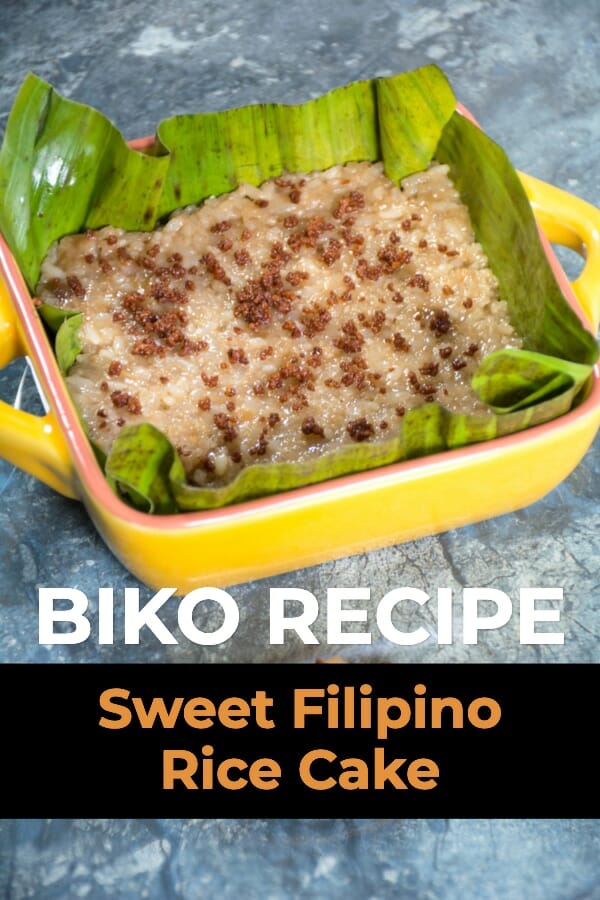Biko is a sweet sticky rice cake made with glutinous rice boiled in coconut milk and brown sugar. Finally, this super sweet dessert dish is topped crispy coconut curds made from boiling coconut cream, known as latik.
This biko recipe shows you exactly how to make this popular snack, usually enjoyed in the afternoon, or at parties, gatherings, fiestas, and at New Years and Christmas events.
It’s All About The Rice
Rice is a staple food in the Philippines. It’s almost like a partner for every meal. A main course isn’t complete without sticky rice. The starchy cereal grain is so common in the Philippines that you will see it at every breakfast, lunch and dinner sitting. There are as many as 300 varietie in the the country.
Sinandomeng, for example, is a soft rice grain that is roasted. Another popular Filipino rice variety is Dinorado rice, which has a natural fragrant aroma. Rice grain is one of the most important foods in the Philippines and has inspired many sweet and savory dishes with a touch of Filipino taste.
This Filipino dessert is made with glutinous rice, a starchy short grain variety with a solid milky color. Gluttonous rice is commonly found in Southeast and East Asia and is often cooked and prepared as a dessert.
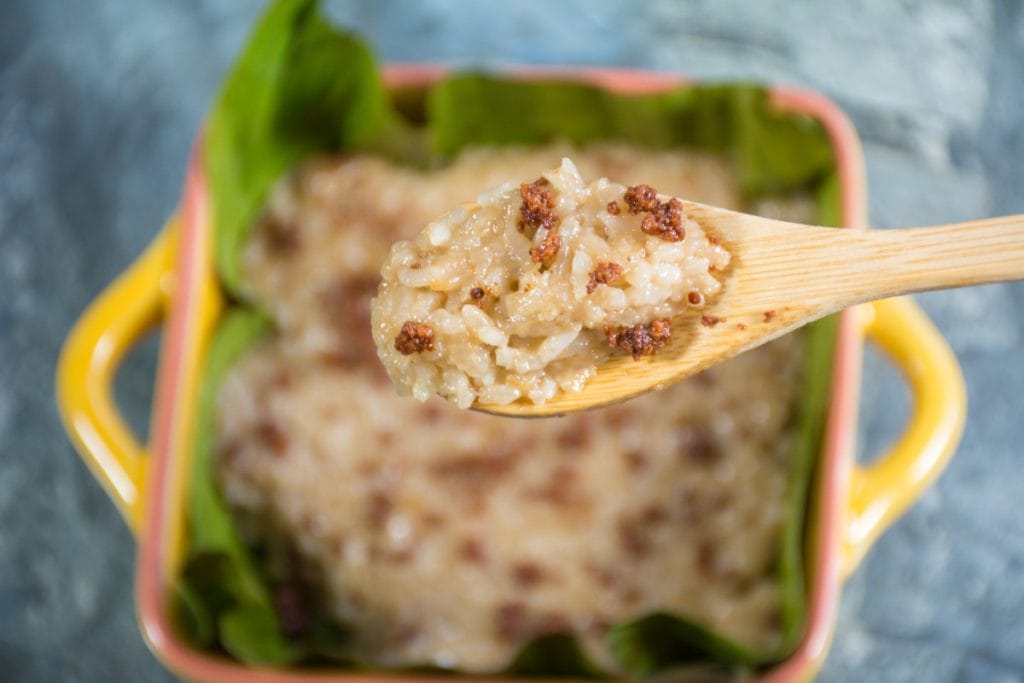
Biko Variations
Like other rice snacks in the Philippines, biko is referred to as “Kakanin”. Biko is similar to suman, another snack cooked in coconut milk and wrapped in leaves from banana trees.
Puto, another similar dish, uses rice flour crushed to a sticky paste mixed with sugar and poured into small molds which are then steamed.
Puto bumbóng, another variant of this sweet snack is a purple rice cake usually made in the Christmas season and sold outside the church.
Biko is a filling snack that is heavy on the coconut milk and sugar. Similar to how risotto is prepared, the rice is cooked evenly by mixing continuously. Natural starch is released to help the mixture thicken. Once the mixture absorbs the liquid, the biko is transferred to a pan and cooled before adding a cream-caramel or latik topping.
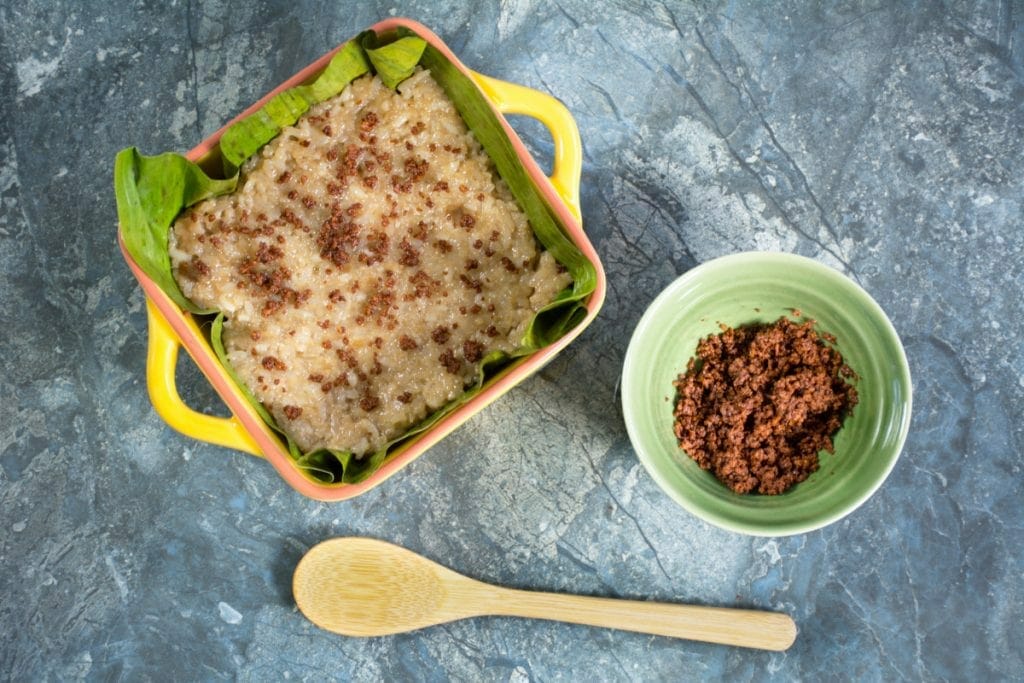
When serving Filipino-style biko, some cooks wrap them separately, some place them in bamboo trays, and some cut them into different shapes. Others serve the sweet treat directly from the pan to the table.
Biko can be kept in the fridge for a week and goes perfect with cocoa, coffee or milk.
Modern rice cake recipes sometimes combine ube (purple yam), to give the dish a beautiful purple hue. Buko pandan flavoring and coloring is a popular addition that gives Biko a bright neon touch.
Some cooks like to top this starchy dessert with chocolate, cheese and other sweets to keep up with the different tastes of the generation. Now let's learn how to make biko with latik.
Step by step photos
Step 1: Combine 1 cup of sticky rice and 1 cup of water in a pot. Place a lid on the pot and bring it to a boil. Cook for 10-15 minutes until the rice is done and the water is absorbed. For a rice cooker option, use 1 cup washed rice with 1 cup water. Let it cool after cooking.
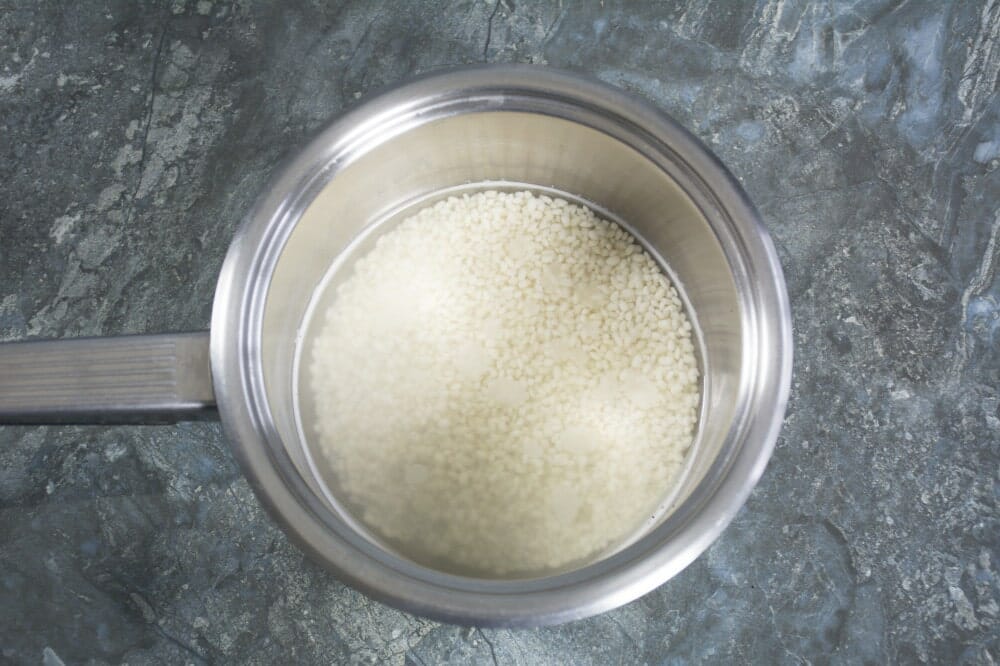
Step 2: In a separate pan, blend 2 cups of coconut milk with 2 tablespoons of sugar. Stir until sugar dissolves and the mixture turns a caramel-like shade.
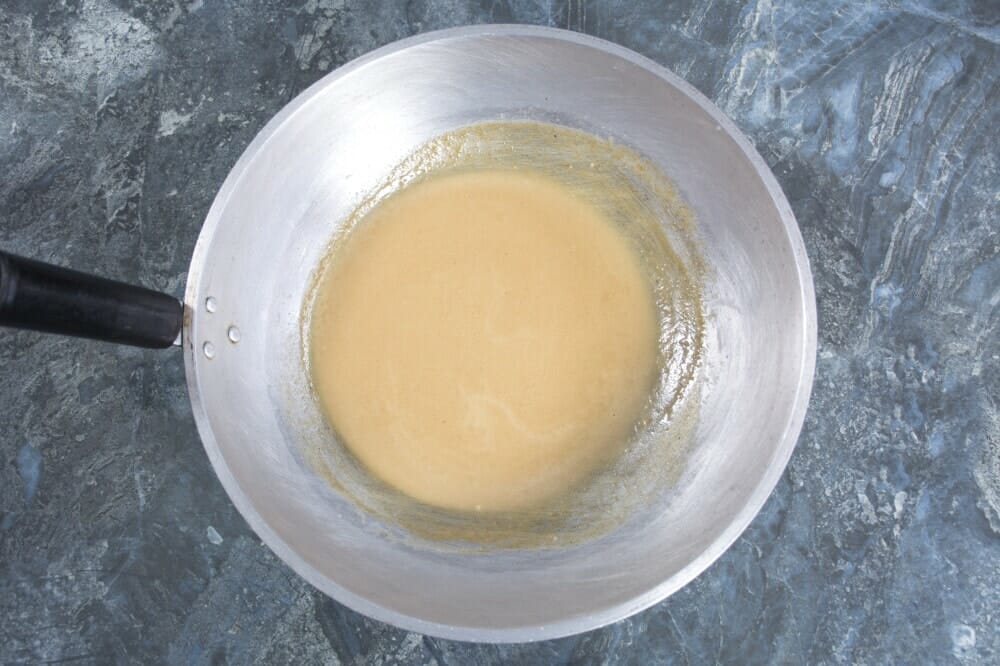
Step 3: Incorporate the cooked rice into the pan, blending until the rice fully takes in the coconut caramel mixture. Cease stirring when the rice gets too sticky.
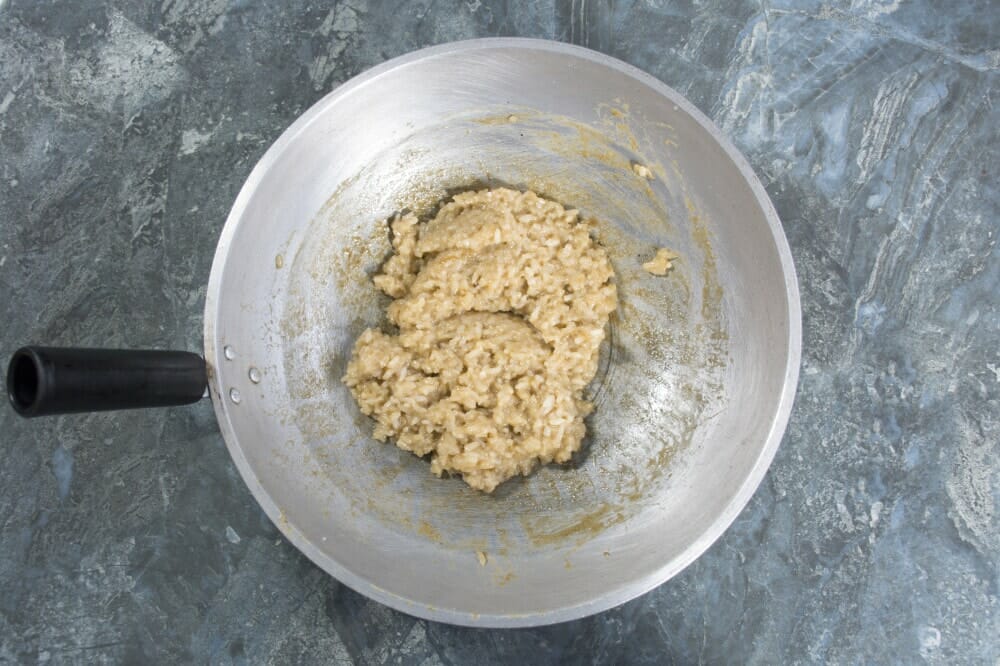
Step 4: Arrange leaves on a small plate or baking dish, and then distribute the sticky rice over them to create an even layer.
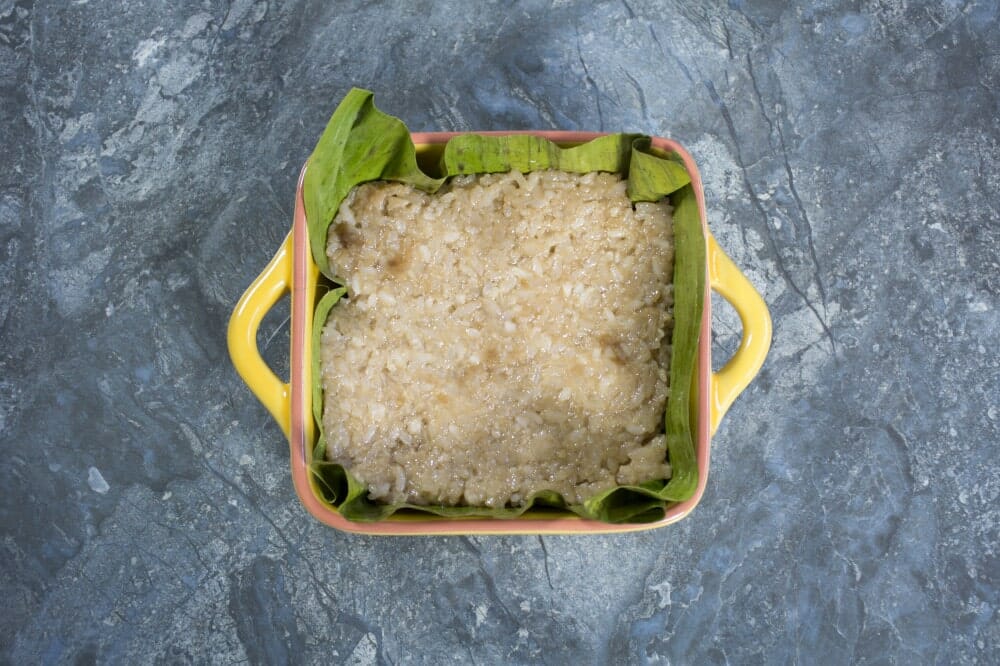
Step 5: In a new pan over medium heat, introduce the coconut cream. Constantly stir and cook until oil and solids separate completely, which might take 5-8 minutes. When the coconut curds turn golden brown, strain and let them cool.

Step 6: Garnish the dish with the coconut cream (latik) and serve while warm.
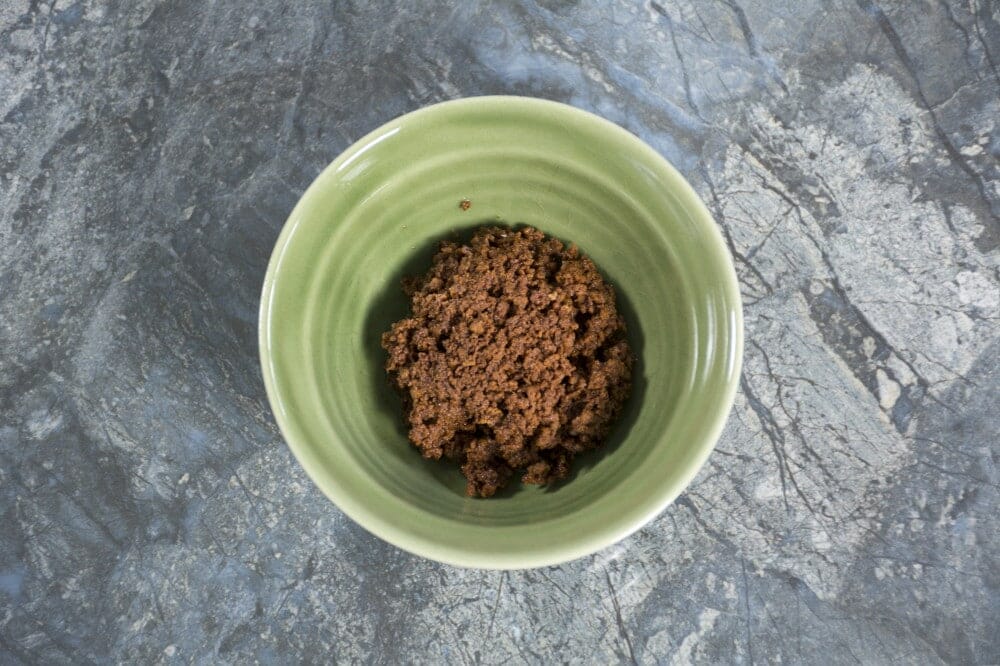
Notes
- Always wash the rice at least once before adding it to the cooking pot.
- Use latik coconut oil as a versatile oil for lots of culinary applications.
- Reduce the milk quantity to 1 cup or add 1/2 to 1 cup brown sugar for a deeper and sweeter coconut caramel (step 2). Stir until thickened, then pour atop the biko.
- Muscovado sugar, an unrefined molasses-flavored sugar, is a good alternative to brown sugar.
- Add pandan leaves or vanilla extract to step 2 to enhance the flavor of the biko, then remove them before adding the rice.
- Refrigerate the completed dish in an airtight container for up to a week. Reheat the biko in the microwave for a few minutes before serving.
Recipe
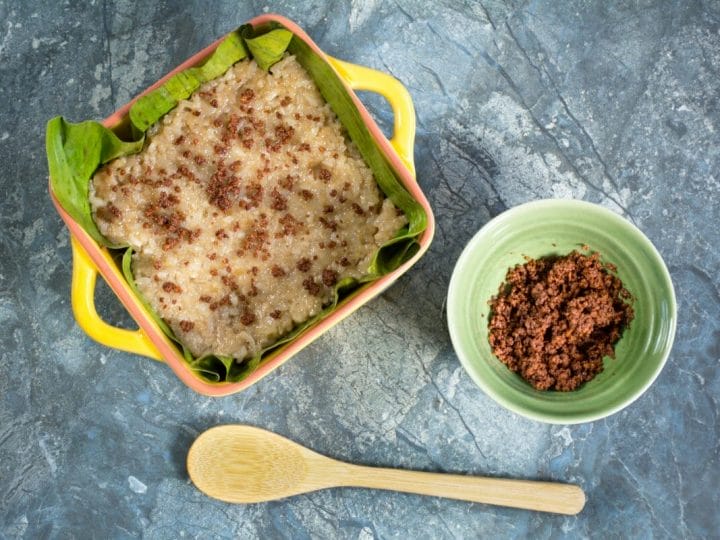
Biko with Latik: Sticky & Starchy Sweet Rice Snack
Biko rice cakes are a sweet snack or dessert made with glutinous rice boiled in coconut milk and sugar. Topped with crispy coconut curds, this popular snack can be enjoyed as an afternoon treat or shared at parties and events.
Ingredients
- 1 cup glutinous rice or sticky rice
- 1 cup water
- 2 cups coconut milk
- 2 tbsp dark brown sugar
- 1 cup coconut cream
- Banana leaves (optional)
Instructions
- In a pot, add 1 cup sticky rice and 1 cup water. Cover and bring to a boil. Leave to cook for 10-15 minutes or until the rice is fully cooked and the water has evaporated. Alternatively, you can also prepare in a rice cooker by adding the washed rice with 1 cup of water. Set aside to cool.
- In a pan, mix 2 cups coconut milk and 2 tbsp sugar. Mix until sugar dissolves, and the liquid turns a caramel-like color.
- Add the rice into the pan and mix until the glutinous rice fully absorbs the coconut caramel mix. Stop mixing when the rice turns too sticky to mix.
- Line the leaves in a small plate or baking dish. Carefully add the sticky rice, spreading it to make an equal surface.
- In another pan, at medium heat, add the coconut cream. Continue to cook, mixing continuously until the oil and solids fully separate. This may take 5-8 minutes. Once the coconut curds turn a golden brown color, strain and allow to cool.
- Top with the coconut cream (latik) and serve warm.
Notes
Nutrition Information:
Yield:
4Serving Size:
1Amount Per Serving: Calories: 576Total Fat: 36gSaturated Fat: 33gTrans Fat: 0gUnsaturated Fat: 2gCholesterol: 0mgSodium: 48mgCarbohydrates: 64gFiber: 1gSugar: 47gProtein: 4g
This information is automatically calculated by third party software and is meant as a guideline only. This website is written and produced for informational purposes only. Statements within this site have not been evaluated or approved by the Food and Drug Administration
